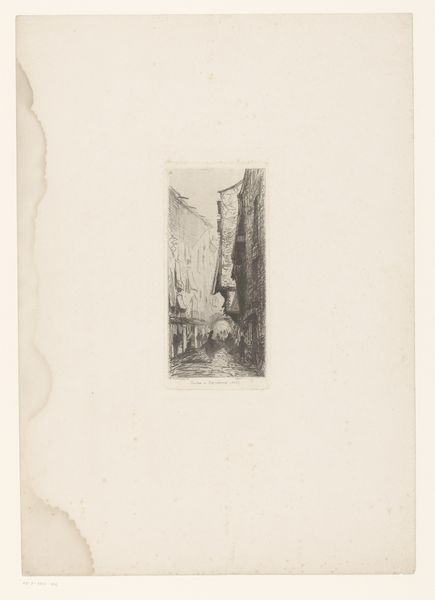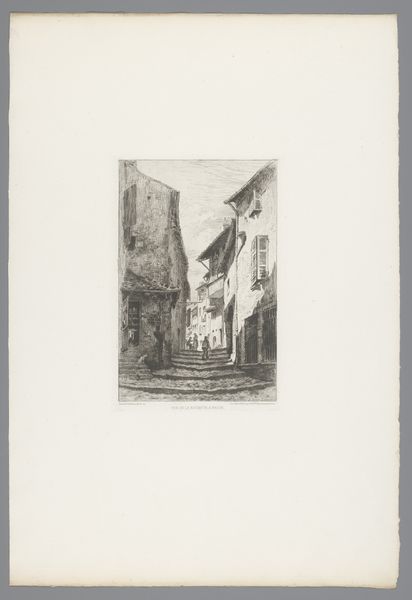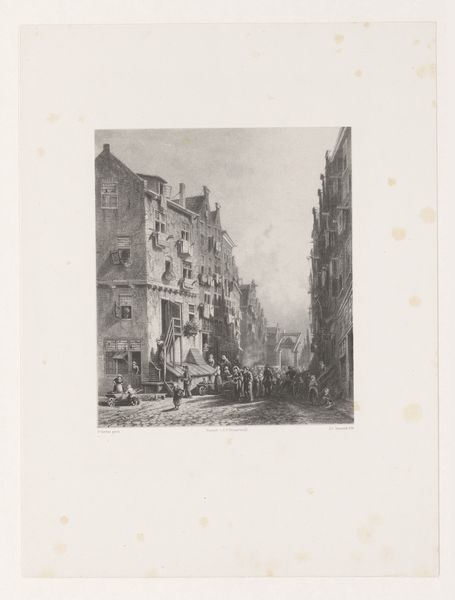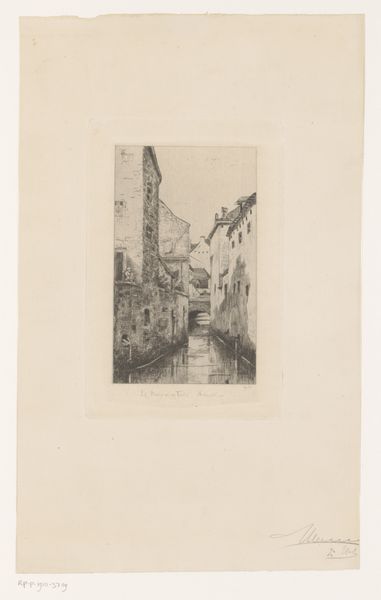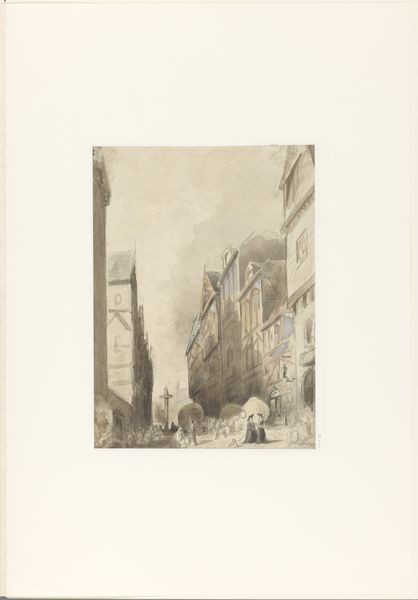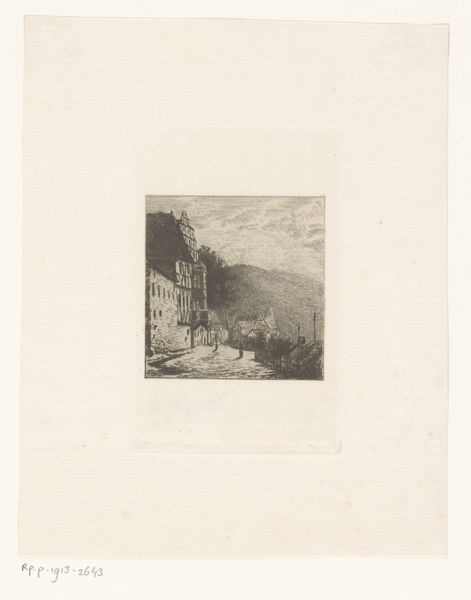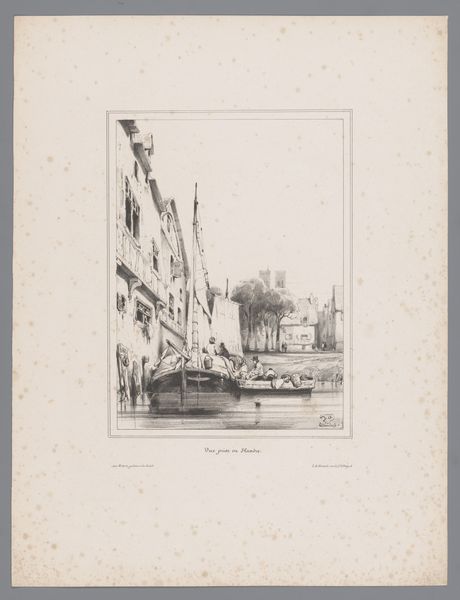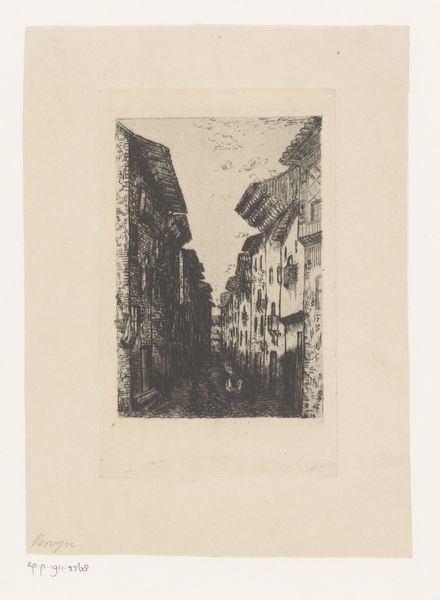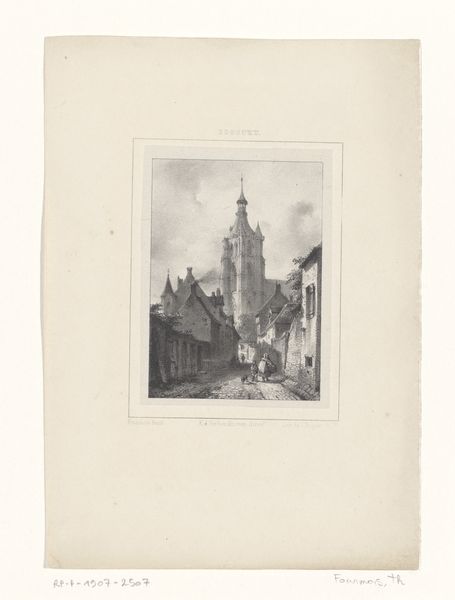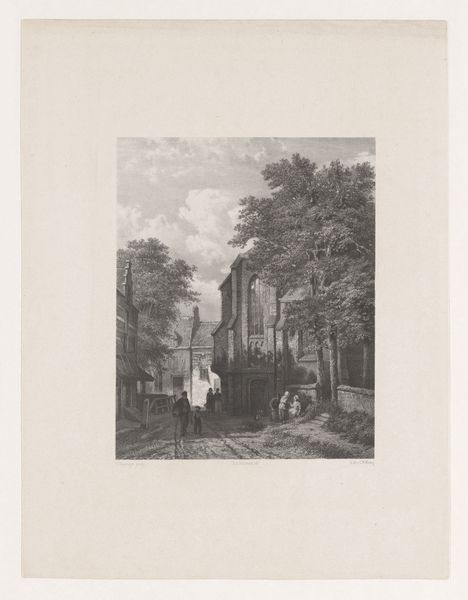
Dimensions: height 208 mm, width 137 mm
Copyright: Rijks Museum: Open Domain
Curator: What strikes me immediately is how the etching's meticulous detail transforms such an ordinary urban scene into something hauntingly beautiful. It's got that romantic feel, almost theatrical with the heavy clouds and dramatic light. Editor: Indeed. We are looking at “Gezicht op een straat in Braunschweig”, an engraving attributed to Auguste Numans, likely created sometime between 1833 and 1879. The medium itself, engraving, is so telling. Consider the labor involved: the precise, painstaking work of cutting lines into a metal plate. The original printing run also matters here. Curator: It feels like each line tells a story. I see those towering gothic spires fading into the background –they are almost pressing down on those tiny figures below, aren't they? Editor: Absolutely, the materials convey meaning. The very act of replicating an image, turning a street view into a reproducible commodity—the societal implications of that simple fact, especially in a rising capitalistic world! Engravings democratized images, mass production in its nascent stages! Curator: It is funny, though, that you mention those implications because even though it's meant to depict reality, this almost has this otherworldly air because of the textures created by the engraving. Editor: The question is, what were Numans' influences? To see German Expressionism noted in the file feels jarring since we are more firmly planted in realism. To add, let's address how this work would have been consumed! Was this meant to document city architecture or simply beautify urban spaces, romanticizing German city living for sale? Curator: Maybe it was to romanticize those daily spaces! In that sense, even with all of its attention to detail and architectural integrity, that intention adds another layer of subjectivity. The process becomes intertwined with vision, just like you said before about societal impacts. Editor: Right. To wrap it up, I find myself looking again at those buildings and noticing the social fabric imbued. Curator: This work definitely gave me a fresh appreciation of old streets. Even more, thinking about all the craft, social, and capitalistic contexts involved gave me an idea about how it impacted German identity!
Comments
No comments
Be the first to comment and join the conversation on the ultimate creative platform.
